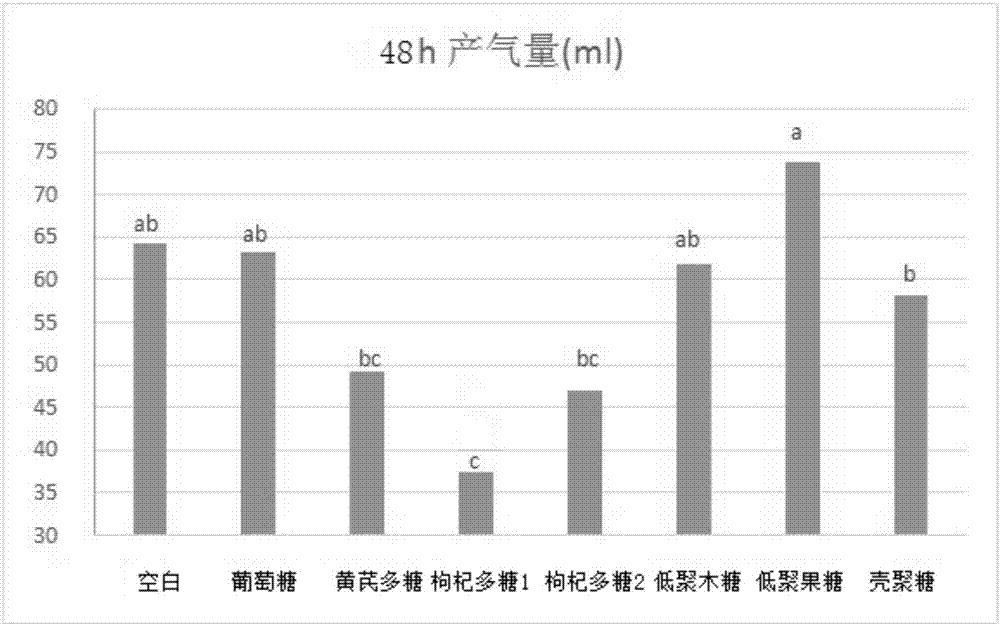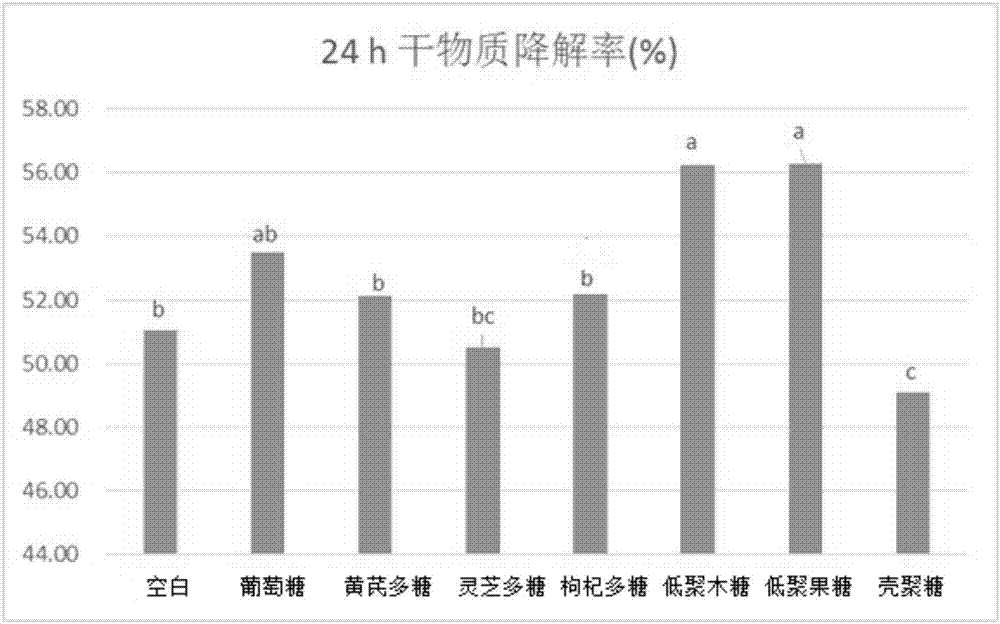Application of lycium barbarum polysaccharide in preparing feed additive for reducing ruminant rumen gas production rate
A feed additive and ruminant technology, applied in animal feed, plant raw materials, applications, etc., can solve the problems of reducing gas production, energy waste, etc., and achieve the effects of reducing output, improving utilization rate, and increasing mass transfer efficiency
- Summary
- Abstract
- Description
- Claims
- Application Information
AI Technical Summary
Problems solved by technology
Method used
Image
Examples
Embodiment 1
[0033] The preparation of embodiment 1 Lycium barbarum polysaccharide
[0034] (1) Dry the wolfberry raw material, crush it, pass through a 70-mesh sieve, and pass through a supercritical CO 2 Extraction, the extraction pressure is 28MPa, CO 2 The flow rate is 30L / h, the extraction time is 2.5h, the entrainer is 90% (volume fraction) ethanol, and the entrainer dosage is 8% of the weight of the wolfberry raw material (after drying), and the extracted material is the degreased wolfberry granules ;
[0035] (2) Add 10 times the weight of water to the degreased Lycium barbarum granules, and perform ultrasonic extraction. The ultrasonic extraction power is 320W, and the ultrasonic time is 30min to obtain an ultrasonic extraction solution;
[0036] (3) Adding a volume fraction of 70% ethanol solution to the ultrasonic extraction solution for alcohol analysis, the addition of the ethanol solution is 3 times the volume of the ultrasonic extraction solution, the alcohol analysis time...
Embodiment 2
[0038] The preparation of embodiment 2 Lycium barbarum polysaccharide
[0039] (1) Dry the wolfberry raw material, crush it, pass through an 80-mesh sieve, and pass through a supercritical CO 2 Extraction, the extraction pressure is 30MPa, CO 2 The flow rate is 28L / h, the extraction time is 3h, the entraining agent is 95% (volume fraction) ethanol, and the entraining agent consumption is 5% of the weight of the wolfberry raw material (after drying), and the extracted material is the degreased wolfberry granules;
[0040] (2) Add 12 times the weight of water to the degreased Lycium barbarum granules, and perform ultrasonic extraction. The ultrasonic extraction power is 400W, and the ultrasonic time is 20min to obtain an ultrasonic extraction solution;
[0041] (3) Adding a volume fraction of 75% ethanol solution to the ultrasonic extraction solution for alcohol analysis, the addition of the ethanol solution is 2 times the volume of the ultrasonic extraction solution, the alcoh...
Embodiment 3
[0042] The preparation of embodiment 3 Lycium barbarum polysaccharide
[0043] (1) Dry the wolfberry raw material, crush it, pass through an 80-mesh sieve, and pass through a supercritical CO 2 Extraction, the extraction pressure is 25MPa, CO 2 The flow rate is 32L / h, the extraction time is 2h, the entraining agent is 90% (volume fraction) ethanol, and the entraining agent consumption is 6% of the weight of the wolfberry raw material (after drying), and the extracted material is the degreased wolfberry granules;
[0044] (2) Add 8 times the weight of water to the degreased Lycium barbarum granules, and perform ultrasonic extraction. The ultrasonic extraction power is 350W, and the ultrasonic time is 25min to obtain an ultrasonic extraction solution;
[0045] (3) Adding an ethanol solution with a volume fraction of 80% to the ultrasonic extraction solution carries out alcohol analysis, the addition of the ethanol solution is 3 times the volume of the ultrasonic extraction solu...
PUM
| Property | Measurement | Unit |
|---|---|---|
| pore size | aaaaa | aaaaa |
Abstract
Description
Claims
Application Information
 Login to View More
Login to View More - R&D
- Intellectual Property
- Life Sciences
- Materials
- Tech Scout
- Unparalleled Data Quality
- Higher Quality Content
- 60% Fewer Hallucinations
Browse by: Latest US Patents, China's latest patents, Technical Efficacy Thesaurus, Application Domain, Technology Topic, Popular Technical Reports.
© 2025 PatSnap. All rights reserved.Legal|Privacy policy|Modern Slavery Act Transparency Statement|Sitemap|About US| Contact US: help@patsnap.com



